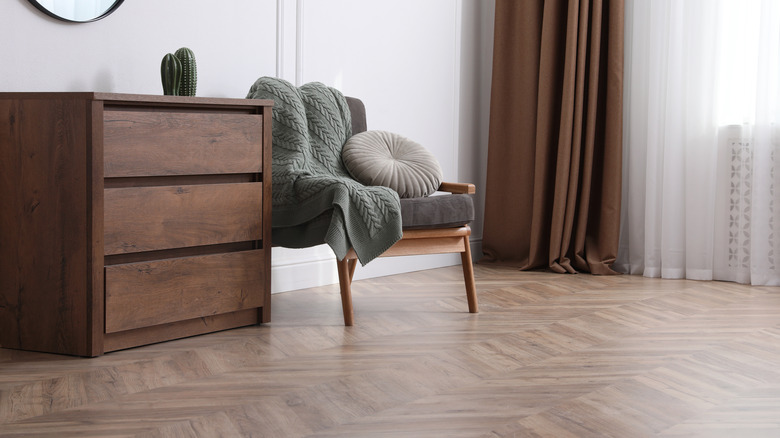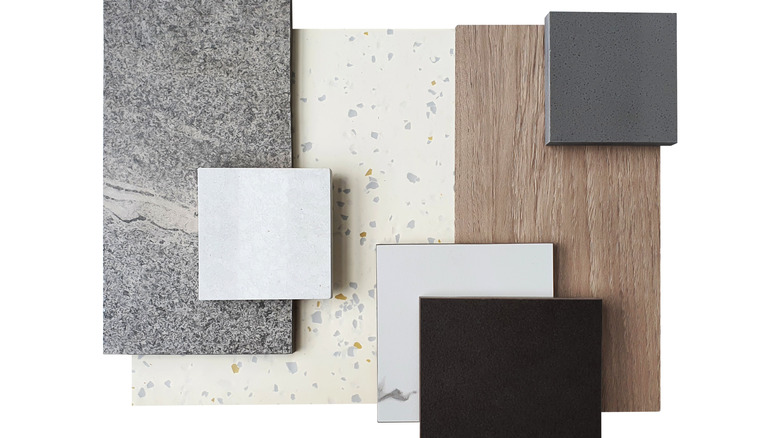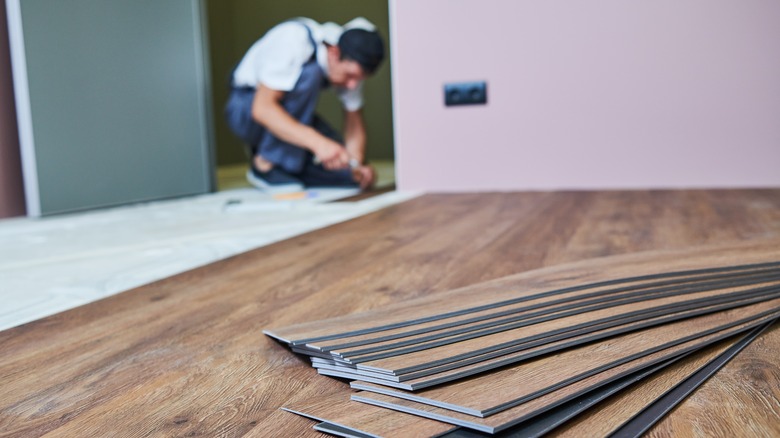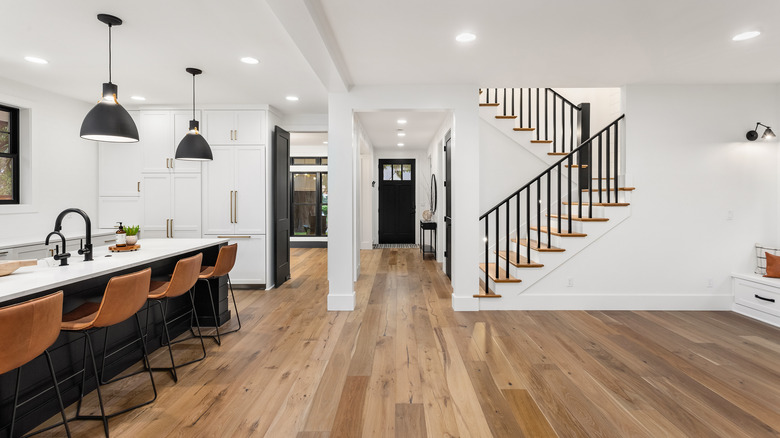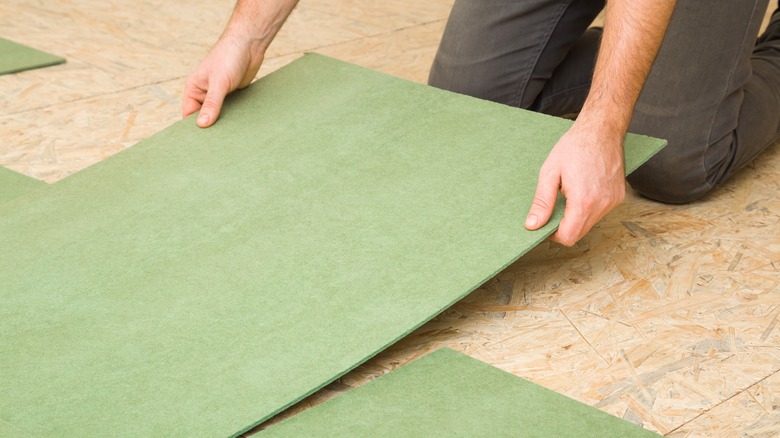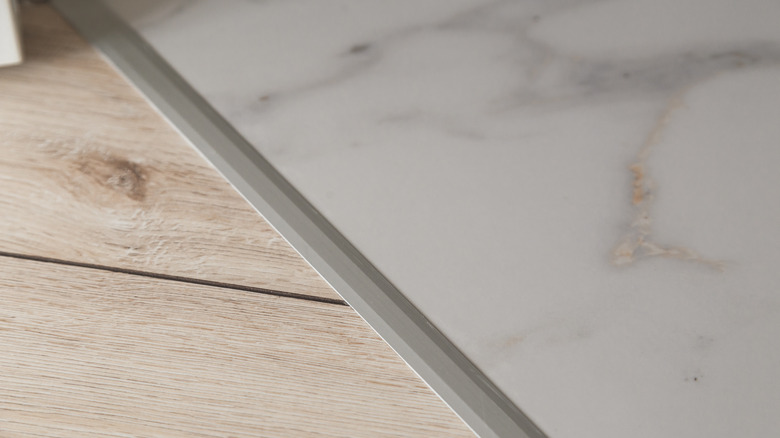An Interior Designer Explains The Biggest Flooring Mistakes Homeowners Make - Exclusive
When envisioning your dream home, you might think of the unique architectural features you love — an abundance of windows that fill the space with natural light, or even the type of furniture and overall aesthetic you desire. However, there's one essential component of any home that you shouldn't forget about: the flooring. Flooring might not be the first thing you notice when you walk into a room, but it greatly impacts the overall aesthetic of your space. It can help you create a particular look or feel, and lousy flooring can ruin even the most well-designed space. ABC Floor Sanding and Refinishing explains that it plays a significant role in the functionality of your home and can even impact your health.
And, even if you're not planning to be in your current space forever, refreshing your flooring is still a significant benefit. As Homelight reports, certain types of flooring can increase your home's value and make your home more appealing to buyers. This is especially true of hardwood, which over 60% of respondents polled in a recent House Digest survey flagged as their flooring of choice. In an exclusive interview with House Digest, Rachel Robarge, head of design at June Homes, explained some of the biggest flooring mistakes that homeowners make. Read on so you know which missteps to avoid the next time you take on a renovation project that involves switching up your flooring.
Making the wrong material choice
Flooring greatly impacts the aesthetic of a space, and you might consider it a mistake if you select a particular wood stain or tile and end up not loving it as much as you thought you would. Those are relatively easy fixes, though, and in some cases, can even be altered — for example, you can refinish hardwood flooring and use a different stain if you hate what you chose at first. However, don't forget to consider functionality, especially in spaces where water could become an issue.
Rachel Robarge notes, "Using the right material for the application is extremely important. Making sure you are putting durable waterproof materials in spaces like your bathroom and laundry room will prevent dealing with water damage in the future. And on the subject of longevity, Robarge says, "Also making sure you are using a harder material in high-traffic areas will keep your home looking clean and new longer." As her advice indicates, durability is an important consideration. No matter how beautiful a particular type of flooring is, you likely won't relish seeing the damage resulting from putting a very delicate kind of flooring in a high-traffic area.
Starting at the wrong place
For ease of installation, there are specific parameters to adhere to when laying flooring. It would be bizarre to begin the process in a random spot in the room, which could lead to issues along the edges, depending on the shape of your space and your mastery of measurements. However, that doesn't necessarily mean you should always start at the edge of the room if you want the best results. As Rachel Robarge explains, "When laying tile or plank flooring you want to think about where you are going to start; this will affect how the rest of the space will look. You should start at the main focal point of the room."
In a space like a living room, this could be in a somewhat unusual spot, such as by the fireplace. In a kitchen, you might begin by the large island or where your stove stands if that's the showstopper. If you're having trouble figuring out exactly what the focal point in the space is, especially in a larger area with multiple options, consider where your eye is drawn to when you walk into a room. You might even ask someone who doesn't live in your home to weigh in, as they'll have a much different perspective than those who see that room daily.
Going in the wrong direction
This may not be quite as big an issue with specific flooring shapes, such as square tiles, but orientation is a significant thing to consider for any flooring with a rectangular shape. If you've selected hardwood flooring, for example, do you want the boards to stretch horizontally or vertically in your space? According to Rachel Robarge, it depends on the effect you're looking to achieve since "The direction you lay your flooring will affect how you perceive the size of the space."
"Laying your flooring parallel to the largest wall in the room will make it feel larger," a handy tip for anyone switching up the flooring in a smaller space or just someone who wants their home to feel as spacious as possible. "If you are dealing with a more square space, a good rule of thumb is to lay the flooring perpendicular to the door," Robarge concludes. While these rules of thumb can be helpful for any plank flooring, from hardwood to vinyl, they may also come in handy if you've selected rectangular tiles in any space and are struggling to figure out the best orientation.
Not leveling the subfloor
When painting, you typically don't have to put much thought into preparing the surface you're working on beyond giving it a quick clean to ensure dirt or debris doesn't get into your fresh coat of paint. However, flooring is an entirely different matter. "If your subfloor is not level you will experience bubbling or cracking over time. This is a very important step of the process that should not be overlooked," advises Rachel Robarge.
Though it takes some extra time initially, you cannot skip this step if you want the best results. Not only will it cause issues over time, as Robarge flags, but it can also compromise the overall look of the flooring as well — no one wants the eyesore of an unsightly bump or imperfection right in the middle of the room. And luckily, while severe cases might require you to bring in an expert, in most instances, you can DIY the option with a self-leveling compound that helps to build up lower spots to achieve a leveled surface. It can also be handy to know what material you're planning to use in the space to create the best subfloor situation that's both even and supportive of whatever will lay atop it. There may be certain materials needed for tile flooring, for example, that you wouldn't have to worry about for vinyl.
Not considering transitions and material thickness
There are certain homes where the same flooring extends to virtually every room, such as Mediterranean-inspired spaces, where a particular type of tile stretches from the living room to the kitchen to the bathrooms. However, in many homes, you'll have a few different materials — perhaps hardwood in all the common areas, carpet in the bedrooms, and tile in the bathrooms, for example. You'll, of course, want to take all the necessary measures to ensure the flooring works in each room, from leveling the subfloor to getting the orientation right. Still, you also need to consider how the different types of flooring work with one another.
"When you are transitioning from one material to another, it is important to think about how they will transition. A lot of time your materials are not the same thickness which can be a trip hazard," says Rachel Robarge. The solution to this issue is simple — "Installing proper traditions between materials will give your space a cleaner look." You don't have to forgo your dream flooring options just because there are some differences in the thickness in rooms that are next to each other — make sure that you have transitions to help both the aesthetics and the safety of those living in the home.
